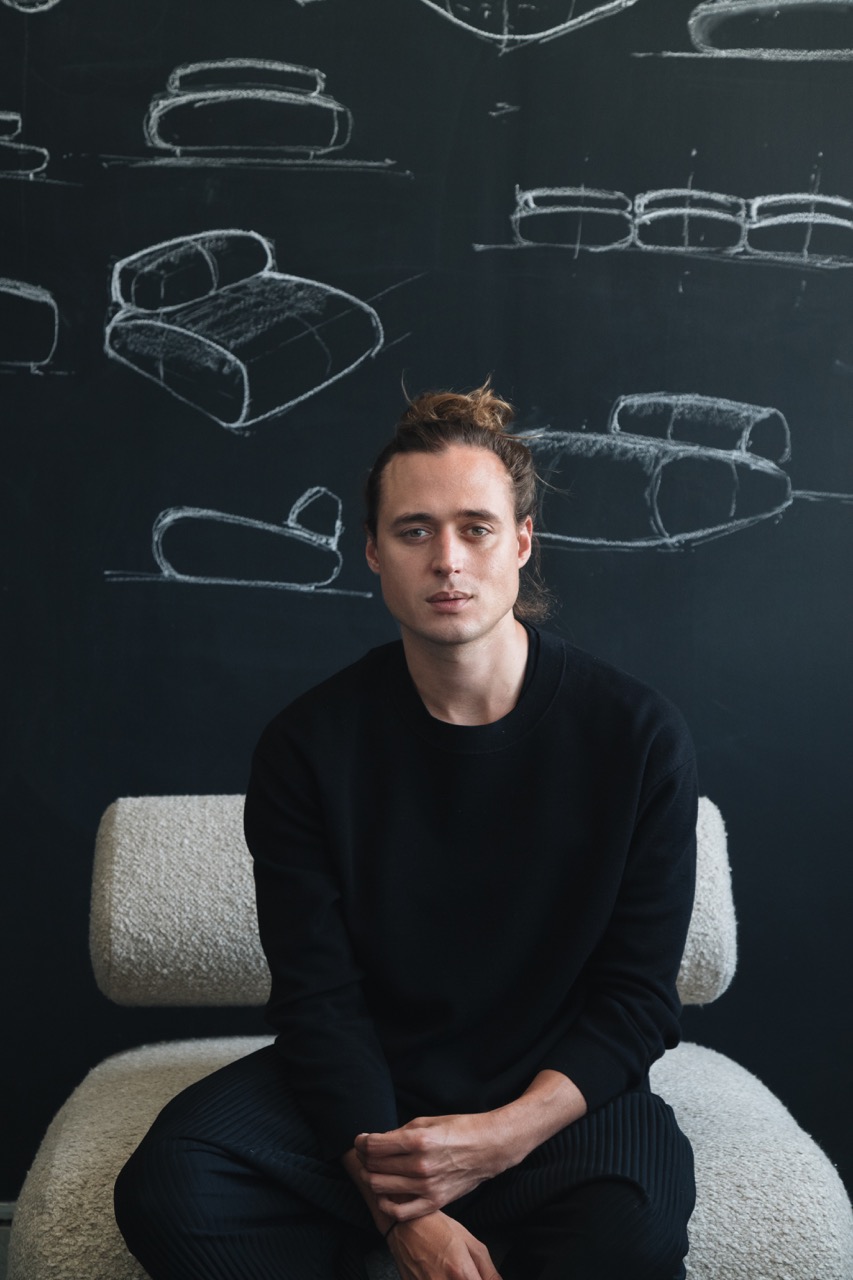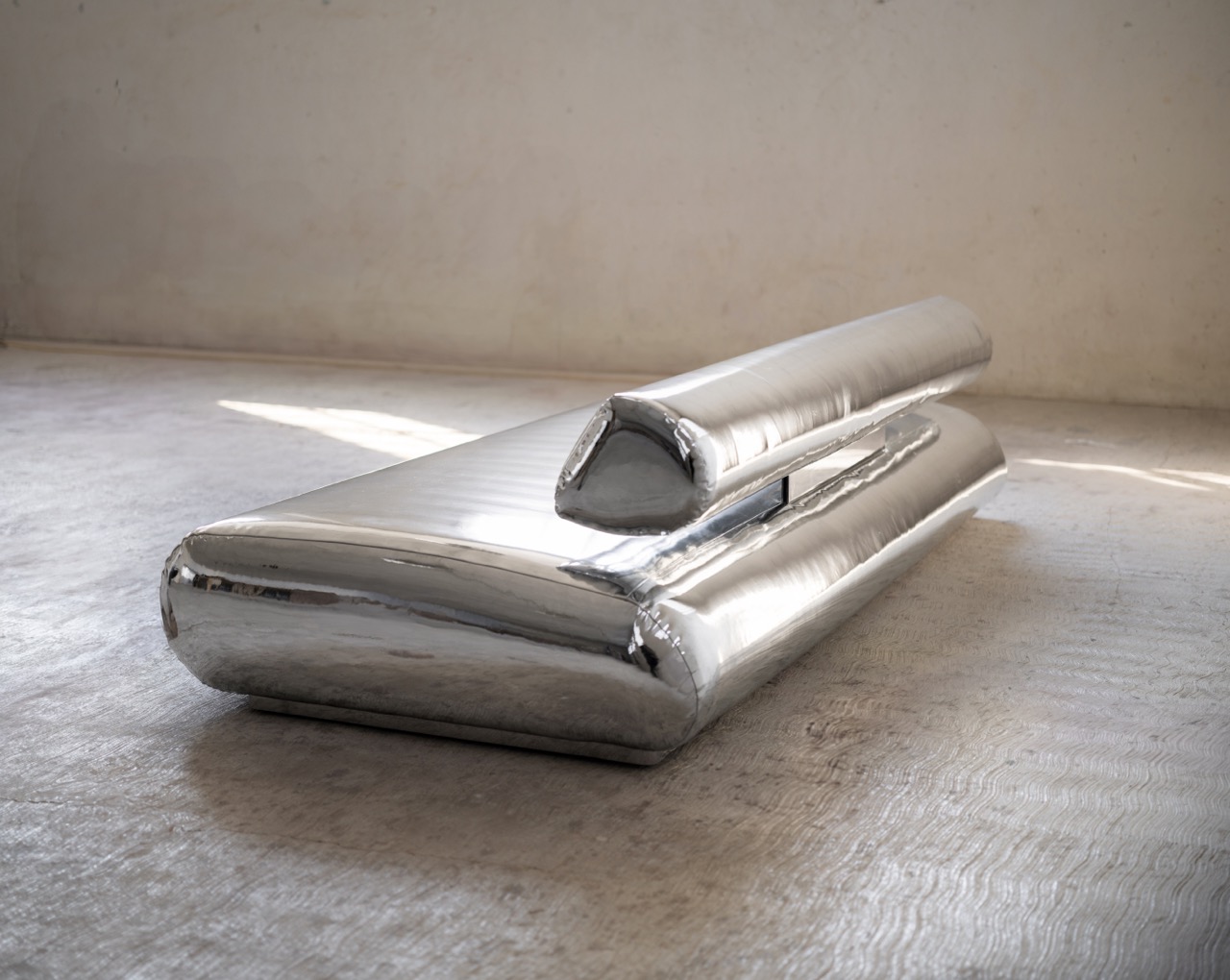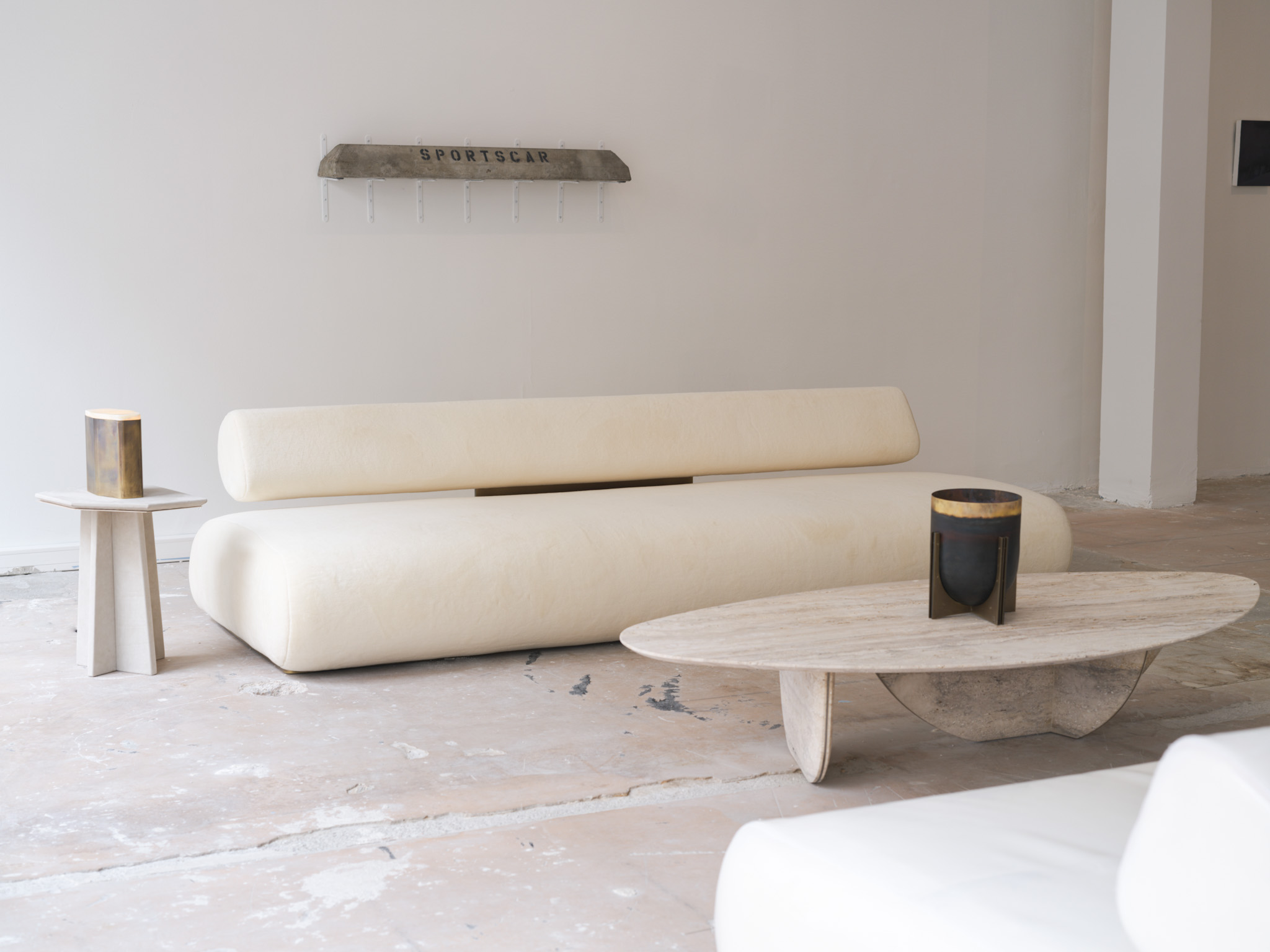The ‘Beluga’ looks like a sculpture because it is.

There are people who make furniture, and then there are people who terraform entire realities, one Beluga-shaped sofa at a time. Alexander Diaz Andersson, founder of ATRA, is definitely in the latter camp. His grandiose pieces are inspired by his dual heritage and obsession with sci-fi. Their monumental looks deceive, they are actual objects you can sit on comfortably. With one foot in Mexican brutalism and the other in Scandinavian restraint, his work is somehow both ancient and futuristic, minimal but maximal in concept – like if a Mayan observatory and a spaceship had a baby, and that baby was into biohacking and dolphin tech.
We spoke to Alexander about comfort, intention, and the value of actually using your most luxurious possessions. Spoiler: you’re not going to guess his dream client.
Good furniture elevates your everyday spaces: what other rituals or habits do you have to elevate your daily life?
Closeness to my family – my life partner, my child. Meditation has helped me adapt to modern realities. And music is release. DJing gives me real pleasure. I like easing people into more alternative musical expressions, or, as some of my friends call it, dolphin tech music. There’s freedom in that.
Let’s talk about comfort: your pieces, like the Beluga couch, look sculptural, almost like art you’re not meant to sit on. What does comfort look like for you?
Comfort doesn’t mean you soften the idea. Comfort means presence. That a piece can hold you, support you, while still having form, intention, power. The Beluga looks like sculpture because it is. But it’s also made to be lived in. It’s about creating something that’s bold enough to speak, but quiet enough to hold you.
What were the beginnings of your studio like, how did you go about finding the craftsmen/women and artisans you work with today?
It started in the form of a mentorship. I had a mentor in design, Alexander Carlsson, who helped me find my language, and once I found that language, I had to translate it into a cosmo-vision. That’s when I entered the woodshop. From there, I moved through all the other disciplines surrounding ATRA’s collection. That mentality, mastering each discipline before taking creative control – was something embedded in me by my parents. How am I supposed to direct design if I don’t know how it’s built? Once you understand how things are made, you can stretch the limitations.
I can imagine the craftspeople you’re working with appreciate that too. You’ve mentioned that your sofas are designed for gatherings inspired by cultural traditions. Tell me more?
It comes from something one of my other mentors, William Galt, once said. He was the kind of man whose life should be a movie or a book. But his philosophy was simple: to resolve any conflict or create bonds of union, all you need is to sit around a fire. That stayed with me. I try to recreate that feeling – harmonious spaces that invite ease, and a sense of shared purpose.

You’ve said Mexico’s pre-Columbian past inspires you, its architecture, mysticism, and harmony with nature. Do you often find yourself romanticizing that era?
The mythology is undeniably rich, and the architecture is timeless. But what intrigues me more is the contradiction. We’re told these were advanced civilizations, and yet they’re also remembered as barbaric. That duality says a lot. It puts emphasis on the idea that history is written by the victor. So much of what we “know” is a version shaped to justify conquest. What fascinates me is how those two realities coexist… cosmic alignment and brutality. The tension between them keeps showing up in my work.
Your designs often play with generous scale. Do you think “the bigger, the better” when it comes to furniture?Are you a maximalist in that way?
Not really. I don’t think “the bigger, the better.” But I do think scale creates presence, and some ideas need that. I’m not a maximalist in quantity, but I’m a maximalist in concept. If the piece demands space, emotionally or physically, I give it that space.
Many of your pieces are photographed in vast, minimalist interiors. Do you also design for small spaces? How can one create grandeur in a compact city home?
Grandeur isn’t about size. It’s about context and intention. Either with good interior design or with impeccable taste, a small space can feel monumental. Interiors and our collection are separate narratives. Interiors reflect persona. They’re an extension of the self in spatial form. We’ve designed spaceship-like homes in Miami, Etruscan villas in Italy, jungle dwellings in Mexico, and eclectic homes in Malibu searching for their identity. Context is everything. For ATRA as a collection, the minimal expression comes from an ethereal place. It’s not tied to style or geography – it’s narrative. With projects like Earth Year 2100, we imagine a world where objects from today echo through time, chiming into a collective memory. Our pieces live within that imagined future, but are grounded in today’s materials and rituals. It’s not just a chair. It’s a moment, a memory, a reflection.
Your exhibition “CARE INSTRUCTIONS” explores character-building for objects, and how true ownership comes from lived experiences. Do you think objects can hold memory? How do you express your valuation for objects?
Objects absolutely hold traces of how humans interact with them. A tarnish, a dent; these are time capsules. Some of those imperfections can become priceless, especially if they come from someone who’s no longer here. Skin is a play on that idea – encapsulated purity waiting to be dented, to be stained. It’s a commentary on time, interaction, fragility. It’s romantic, yes. But also a little neurotic. That’s where the poetry is.
ATRA’s SKIN (a fitted silicone cover designed for Beluga sofas) plays with the idea of preserving the piece against the test of time while fully upholding its function, reflecting the belief that luxury furniture should be fully inhabited, appreciated and used. I personally grew up feeling like luxury things were for special moments that never came, leaving the items untouched forever. I’ve had to mentally train myself to live in the moment and enjoy luxury when it’s in front of you, making a mundane moment a special one. Does this resonate?
Yes, totally. Skin plays with the value of luxury and what it even means. It also pokes at the myth of scarcity. It’s like finally opening that unopened LEGO box from the ’90s with the Star Wars set inside. You hold it, you look at it, and then, you play. It’s still rare. It’s still sexy. And only a few people will own it. But once you do, it’s yours to live in however you want.
I wish I had this realisation growing up! What were you like as a child yourself? Do you see things back in your design ethos that stem from when you were younger?
I was obsessed with sci-fi. Still am. I think unconsciously I’m always trying to terraform this world into something more civilised, more in tune with nature, with time, with imagination. That impulse never left.

You’ve hinted at an alternate life as a music producer, a farmer, or even an astronomer. How do those fantasies inform your design world today?
My work-life balance doesn’t exist. I’ve had to bargain with myself to create a lifestyle where family, DJ decks, bonsai trees, and architecture can all coexist. That’s the only way I can survive. Balance was something I chased like a white rabbit. But I’m too old to chase rabbits now. I live inside the warren.
I guess the warren is one big labyrinth intersecting all your passions. Can you tell me a bit more about your mindfulness/biohacking project?
Morphus.io is a bridge between nature and technology. It gives the user a portal to the present moment. You sit; 10 to 20 minutes, that’s all. A passive act, something everyone does anyway. Based on your need, we guide you: if you need sleep, we bring you into delta; if you need focus, we pull you into that space. Once the programming starts, it creates an environment where distractions (phones, to-do lists) don’t matter. It’s a portal to the present, but also to something ethereal. It’s passive tech, but deeply human.
Interesting. And how do you recharge yourself best?
With family, with friends, with music. I create bubbles of existence: cutting bonsais, cooking meals, playing with sound. Just normal human stuff.
Passive tech is for superhumans I reckon. Speaking of superhumans – your designs look like they could be in Kim K’s house, or Rick Owens’ house. If you could design for anyone, living or dead, who would be your dream client?
There are different kinds of clients. Some want to express themselves through your work. Others become patrons of your vision. Both types teach you something. The Medici would be my dream client. They didn’t just commission beauty – they shaped culture. That’s what I’m interested in. Design not as product, but as legacy.
Words by Pykel van Latum
Images courtesy of ATRA
Notifications